 ChiroBlock's
ChiroBlock's contract models for custom synthesis & costs
The costs for custom synthesis services differ substantially from project to project, which reflects not only the different prices of starting materials or number of synthesis steps, but also differences in risk profiles, R&D intensities, and requirements regarding purity, safety, documentation, and analytical specification.
Quite naturally, simple, reproducible, well-documented syntheses of standard chemicals are much cheaper than first-time, multi-step syntheses of novel compounds. The price of standard chemicals bought from large-scale vendors offering in-stock products via catalogues usually differs from that of compounds synthesized exclusively on demand, since scale effects (producing a large amount and selling small batches to different customers) with the possibility to allocate both R&D costs and synthesis expenditures to all customers do not exist in the case of customer-specific projects.
The costs of a custom-tailored synthesis are determined by many sub-parameters, the main one being the amount of labour involved (e.g. hours, days, weeks spent on the synthesis and its exploration). Apart from other obvious expenditures such as starting materials, auxiliary reagents, and technologies plus equipment, one has to consider less obvious factors such as:
- synthesis complexity,
- (chemical) risk (especially for novel compounds with no documented procedure available),
- comprehensiveness of available documentation and its comparability with the project, and
- the chosen contract model (i.e., the allocation of risks and chances, reference figures for assessing the success and the time scale of remunerating results).
According to our experience, selecting the optimal contract model is at least as important for the overall project success as the scientific input and the entire project set-up plus its management.
Contract Models for Custom Synthesis Services
► Fee for Service/ Fee for Results (FFS/FFR)
ChiroBlock offers different contract models with additional options to choose from. Roughly 90% of our projects are conducted on a “Fee for Service/Fee for Results” (FFS/FFR) basis.
This model covers the whole R&D risks, and customers only pay if we can deliver the requested compound or result. The above approach is attractive to numerous customers, since most syntheses, especially those aiming at novel compounds, come with a substantial failure risk and require an expert to suggest several possible approaches and evaluate their feasibility. Moreover, even syntheses published in patents or papers are often not directly reproducible.
Thus, to estimate project costs, one needs to know and rank the specific risks of each suggested approach, with resource-based contract types leaving the above risks (and hence, unpredictable costs) with the customer. The FFR model, however, mitigates these risk for the clients and makes projects predictable and calculable. If more resources are needed than anticipated, ChiroBlock covers them without charging more, since we either manage to put the compound /result on the table or not earn any money. This kind of "success pressure" also benefits the technical part of projects, stimulating our team to reach the goals within the set budget frame and motivating every employee to come up with new ideas and problem-solving strategies.
In any case, the customer only pays the amount indicated in our initial quotation, if and only if we succeeded in providing the service agreed.
► Full Time Employee (FTE)
In contrast to ChiroBlock, most CROs offer resource-based contract models, i.e., the so called FTE contract option (Full Time Employee or Full Time Equivalent). The price for the FTE model is calculated only based on the resources employed and not on the actual outcome, i.e., the customer has to pay even if the compound cannot be delivered in the end, since the supplier does not guarantee a result. In case the results were not obtained, e.g., due to unforeseeable problems, the customer has only two options to choose from:
- a) termination of the project (no results at the agreed costs) or
- b) expansion of the FTE contract by booking of additional resources (a chance to get results at higher-than-anticipated costs).
As the price of an FTE model–based quotation is not related to the results, the overall project costs can tremendously increase if unforeseen obstacles occur, which has to be taken into consideration when comparing the prices of different contract options. At first sight, FTE project prices are in most cases lower than those of FFR contracts.
The FTE model is appropriate for customers with a large demand for predictable custom synthesis services (e.g., more than 50 different but related compounds per year), being mostly applicable to big pharmaceutical companies with a huge demand in medicinal chemistry services and wanting to extend their capacities with additional work force. Additionally, FTE quotes are easier to compare (a requirement of many purchasing departments) and the management costs for this model are lower when “renting” 20–30 chemists for several months.
Whereas we do not prefer and suggest this contract option for most of our requests, ChiroBlock does offer it for projects that are completely unforeseeable, e.g., for feasibility studies with a completely uncertain outcome and those corresponding to mere basic research.
However, even in this case, our FTE option (EWH– Effective Working Hours) differs from the standard version, since we revised it to meet customer needs in a better way. With this option, the customer does not pay for complete days/months/years, but only for the hours effectively spent on the project, as recorded by a validated controlling system.
So, there is no danger that customers will be charged for unproductive idle times such as sick leaves, holidays, or breaks in the project flow, e.g., due to missing starting materials or analytical results, damaged equipment, or just a lack of tasks. So, generally speaking, eight EWHs generate more project progress than one classical FTE working day.
► Royalties
About 5% of all our projects, mainly larger ones, are carried out under the Royalty Contract Model. Here, ChiroBlock "invests" in promising ideas by contributing own resources, i.e., money, staff, equipment, know-how, and material, without directly and immediately charging for them.
This can be an ideal solution for companies without own resources for chemical research looking for a long-term partnership. Alternatively, this option is of interest to clients willing to share cost savings (at the time they become relevant) but not ready to spend huge "up-front" sums in R&D ventures.
So, with this model, the customer remunerates ChiroBlock's efforts and investments either via participation in cost savings, turnover contribution, or even with company shares. As ChiroBlock is completely staff-owned, we are able to offer such "investment" options and have both the stability and the patience to value later royalty returns as beneficial for our development. Talk to us and we’ll find the model that suits your projects & budget the best.
Overview on options with pros & cons




